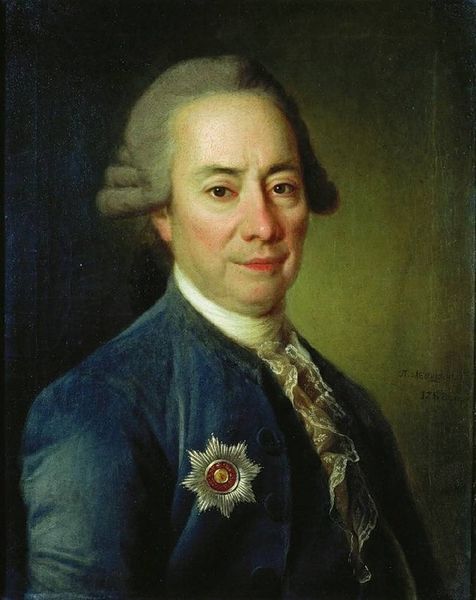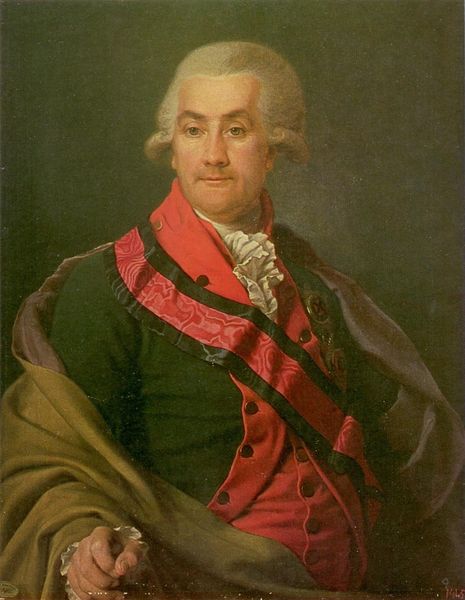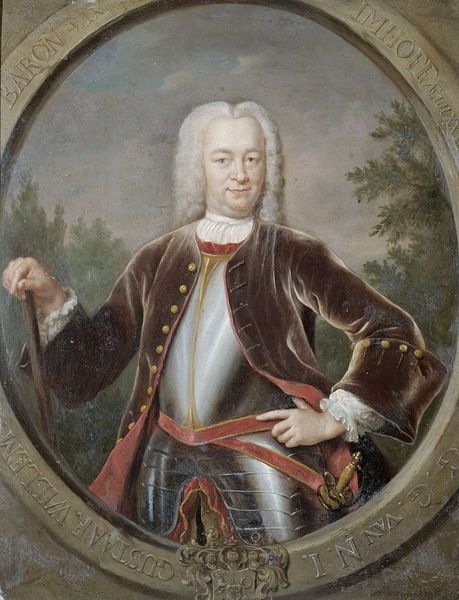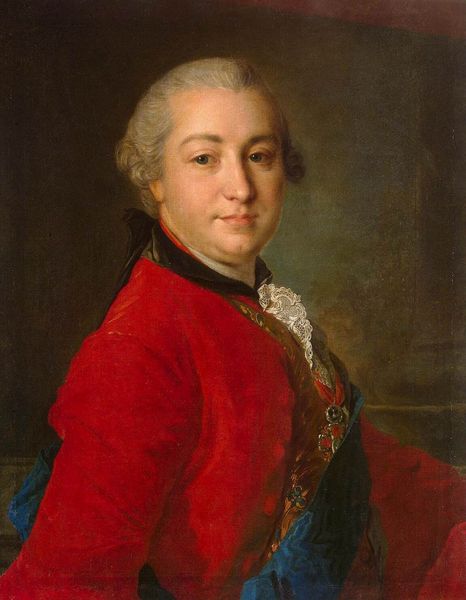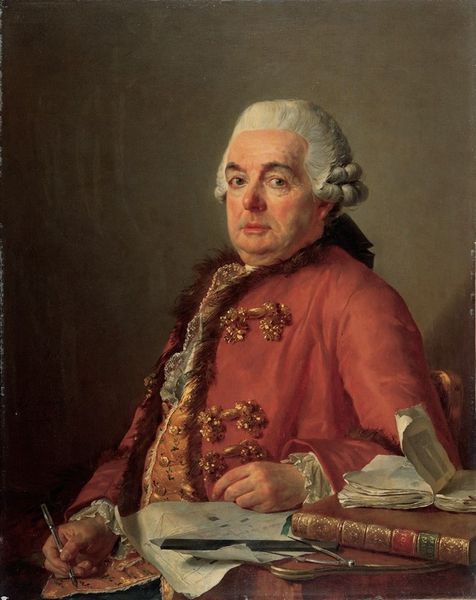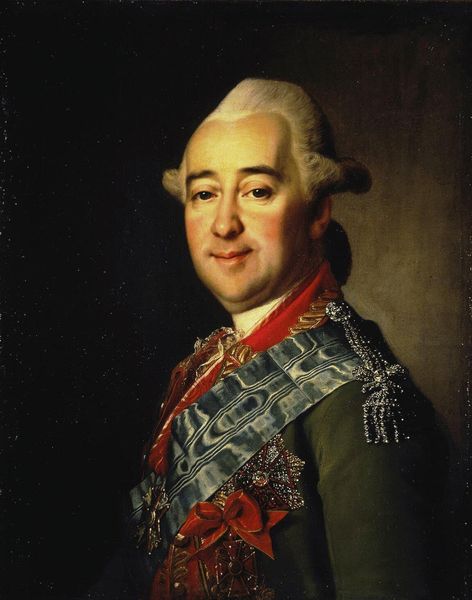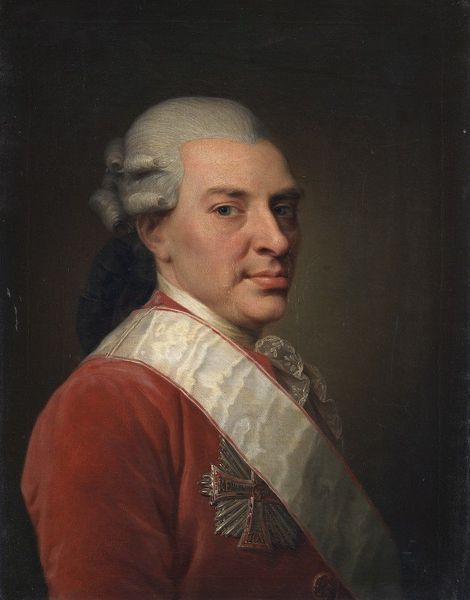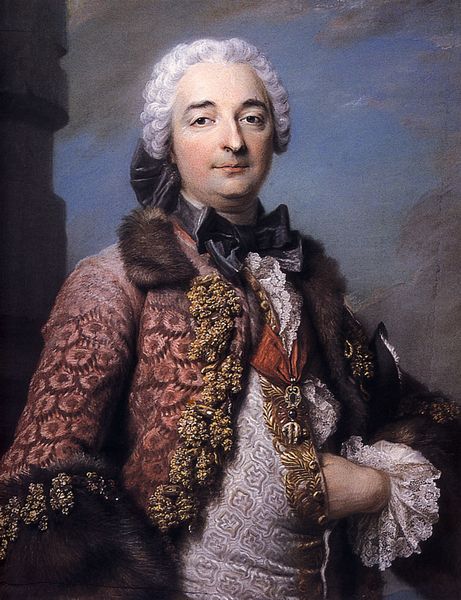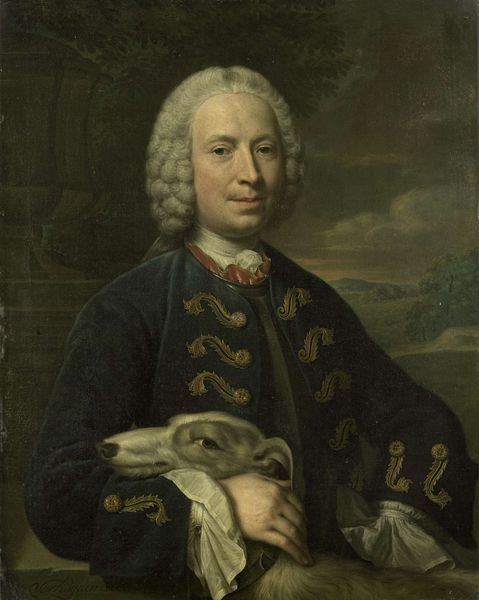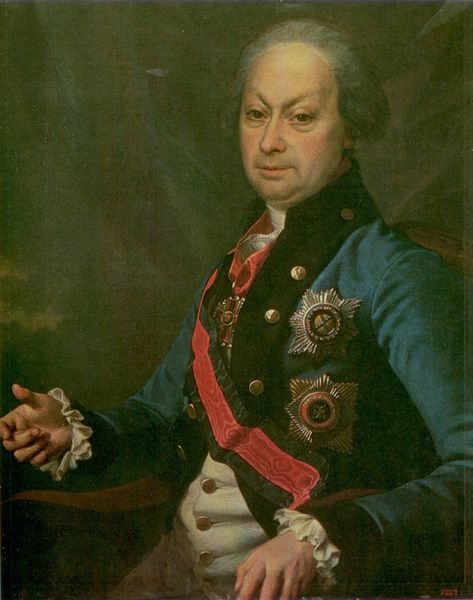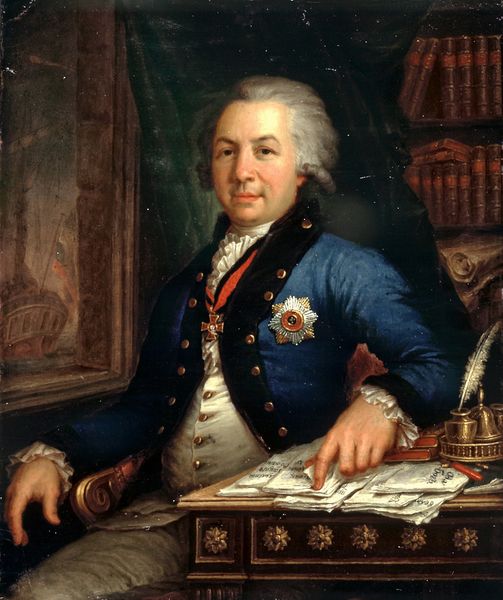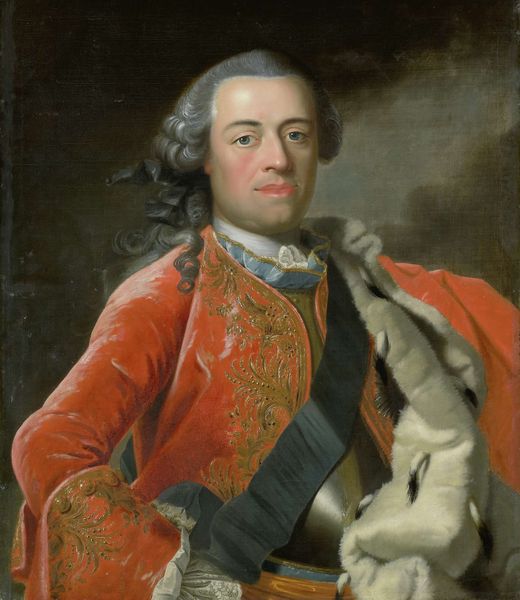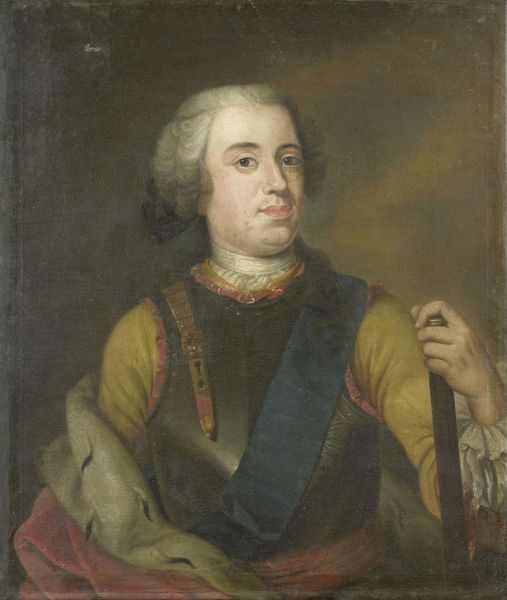
painting, oil-paint
#
portrait
#
neoclacissism
#
painting
#
oil-paint
#
classicism
#
genre-painting
#
history-painting
#
academic-art
Copyright: Public domain
Editor: Here we have Dmitry Levitzky’s “Portrait of Ivan Ivanovich Shuvalov,” painted in 1785, using oil paints. I’m struck by the contrast between Shuvalov's seemingly gentle face and the grandeur of the setting and his attire. What's the story here? Curator: This painting embodies the complex relationship between patronage, power, and the construction of identity within the Russian court during the late 18th century. Levitzky paints Shuvalov, a significant figure of the Enlightenment in Russia, surrounded by markers of wealth, nobility, and access to European knowledge. Editor: So it’s more than just a likeness? What are these "markers" you're talking about? Curator: Absolutely. Consider the details: the medals that signified service to the crown and the embrace of enlightenment ideals, the book—symbolic of his commitment to education and arts, the classical architectural background implying taste, erudition, and connection to Western European values. Editor: It almost feels like an advertisement for the ideal courtier, in a way. Curator: Precisely. Levitzky here engages in the visual rhetoric expected of state portraiture at that time, showing how cultural and political institutions shape artistic representation, yet we should acknowledge how images helped construct that 'ideal' itself. Would you say that such type of presentation had anything in common with current trends in mass culture and the political sphere? Editor: Hmm, interesting question. So, is this painting really about Shuvalov the individual, or about the values and image of the Russian state? I wonder if Shuvalov himself had a say in this, shaping his own presentation. Curator: A complex interplay existed. Patronage dictates certain standards and aesthetics; however, individuals did maneuver within those confines to construct personal narratives within their representations, thus shaping their legacy. Editor: This makes me look at portraiture in a whole new light, as more than just art. It’s intertwined with social and political agendas! Curator: Indeed! By investigating those entanglements, we learn volumes about historical contexts and current power structures too.
Comments
No comments
Be the first to comment and join the conversation on the ultimate creative platform.
